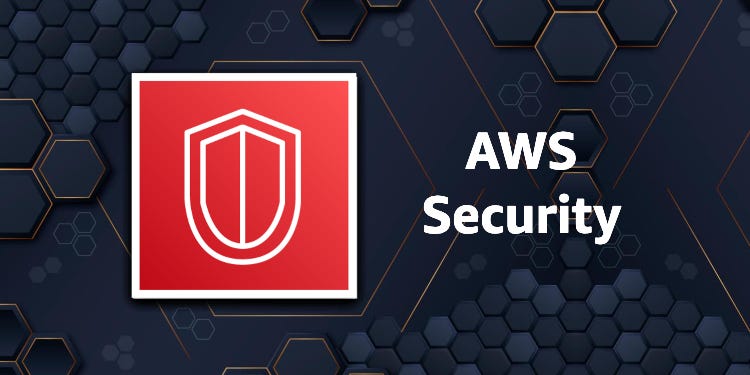The Shield: Navigating the Secure Skies of AWS - A Dive into Security and Compliance
 Sumit Mondal
Sumit Mondal
In the vast realm of cloud computing, Amazon Web Services (AWS) stands tall as a pioneer, offering a plethora of services to businesses and individuals alike. As organizations migrate their workloads to the cloud, security and compliance become paramount considerations. In this blog, we embark on a journey through the secure skies of AWS, exploring the robust security measures and compliance standards that make AWS a fortress in the digital landscape.
The AWS Security Fabric
AWS, like a vigilant guardian, has woven an intricate security fabric that envelops its services, ensuring the confidentiality, integrity, and availability of data. At the heart of this fabric is the shared responsibility model, a pact between AWS and its users. AWS takes charge of the security of the cloud, while users are responsible for security in the cloud.
Identity and Access Management (IAM): The first line of defense in the AWS fortress is IAM. Think of it as the gatekeeper controlling access to AWS resources. With IAM, you can define who (users) can do what (actions) and on which resources. This fine-grained control ensures that only authorized entities interact with your cloud environment.
Hands-on Example: Let's imagine a scenario where you're building a web application on AWS. By using IAM, you can create roles with specific permissions for your EC2 instances, S3 buckets, and other resources. This way, even if an unauthorized entity gains access to your EC2 instance, they won't be able to perform critical actions without the right IAM role.
Virtual Private Cloud (VPC): AWS allows you to carve out your own piece of the cloud with VPCs. It's like having a private fortress in the digital world. VPC enables you to isolate your resources, control inbound and outbound traffic, and even extend your on-premises network to the cloud securely.
Hands-on Example: Picture a scenario where you're deploying a multi-tier application. By setting up different subnets within a VPC and configuring security groups and network access control lists (NACLs), you can ensure that your application's components communicate securely while maintaining a robust defense against unauthorized access.
Guardians of the Cloud: AWS Security Services
Beyond IAM and VPC, AWS provides a suite of security services, acting as vigilant guardians in the cloud realm.
Amazon GuardDuty: This intelligent threat detection service uses machine learning to analyze log data, identifying potential security threats. It can detect anomalies, unauthorized access, and even compromised instances.
Hands-on Example: Imagine deploying GuardDuty in your AWS environment. As your application generates log data, GuardDuty analyzes it in real-time. If it detects suspicious behavior, such as an unexpected spike in traffic or an unauthorized attempt to access resources, it triggers alerts, allowing you to respond swiftly to potential threats.
AWS Key Management Service (KMS): Security in the cloud often boils down to the protection of cryptographic keys. AWS KMS allows you to create and control these keys, ensuring the confidentiality and integrity of your data.
Hands-on Example: Consider a scenario where you're storing sensitive data in an S3 bucket. By using KMS, you can encrypt the data and manage access to the encryption keys. Even if someone gains access to the S3 bucket, the encrypted data remains unreadable without the right keys.
Compliance: Navigating the Regulatory Landscape
In the digital age, data privacy and regulatory compliance are non-negotiable. AWS acknowledges this by adhering to a multitude of compliance standards and certifications.
AWS Artifact: This service provides on-demand access to AWS's compliance reports and documentation. It simplifies the process of understanding the robust controls that AWS has in place.
Hands-on Example: Suppose your organization needs to comply with the General Data Protection Regulation (GDPR). By using AWS Artifact, you can access AWS's GDPR Data Processing Addendum (DPA), gaining insights into how AWS aligns with GDPR requirements. This transparency is crucial for building trust with customers and regulators.
Amazon Inspector: Compliance goes hand in hand with security. Amazon Inspector helps you assess the security and compliance of your applications by performing automated security assessments during development and runtime.
Hands-on Example: In a scenario where you're developing a web application, integrate Amazon Inspector into your CI/CD pipeline. As you push code changes, Inspector automatically assesses your application for vulnerabilities and compliance issues, providing detailed findings and recommendations.
Conclusion: Soaring High in the Secure Skies
AWS, with its robust security architecture and commitment to compliance, offers a haven for businesses venturing into the cloud. As we've explored the various facets of AWS security, from IAM to compliance standards, it's evident that AWS is not merely a cloud service provider but a trusted partner in the journey to secure, compliant, and innovative cloud computing.
In the ever-evolving landscape of technology, AWS stands as a testament to the fact that security is not a one-time effort but an ongoing commitment. By embracing the security features and compliance tools AWS provides, organizations can confidently navigate the secure skies, knowing that their data and applications are guarded by the formidable AWS shield.
Subscribe to my newsletter
Read articles from Sumit Mondal directly inside your inbox. Subscribe to the newsletter, and don't miss out.
Written by

Sumit Mondal
Sumit Mondal
Hello Hashnode Community! I'm Sumit Mondal, your friendly neighborhood DevOps Engineer on a mission to elevate the world of software development and operations! Join me on Hashnode, and let's code, deploy, and innovate our way to success! Together, we'll shape the future of DevOps one commit at a time. #DevOps #Automation #ContinuousDelivery #HashnodeHero